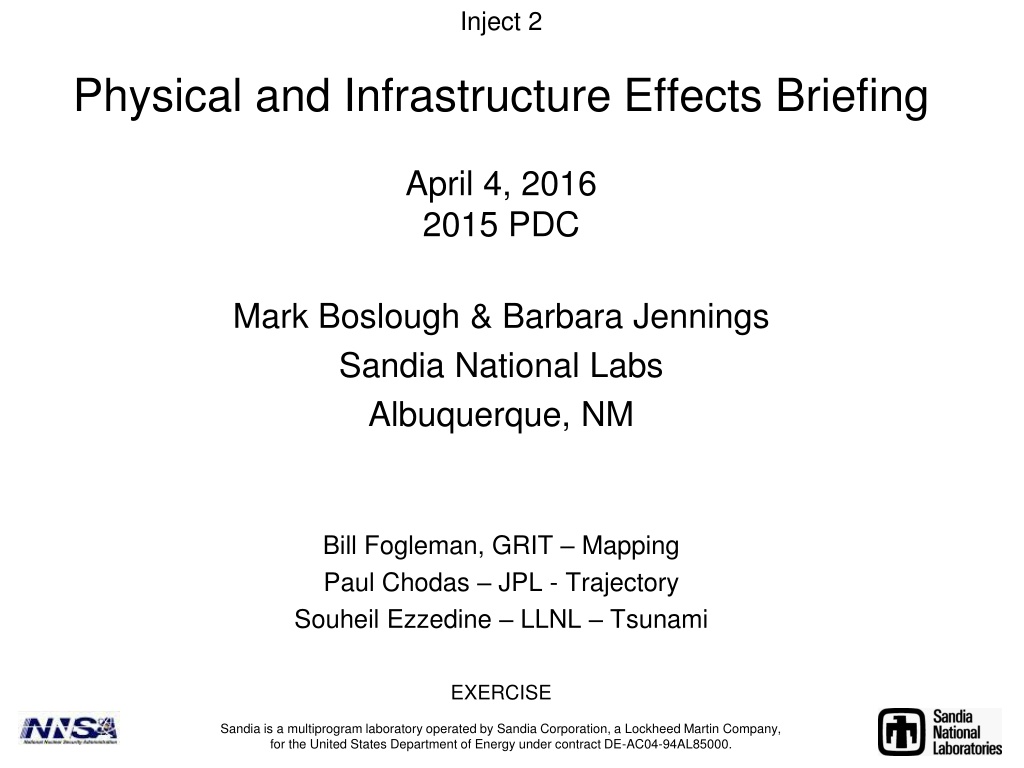Threat Analysis and Mitigation Strategies for Impact Event: Briefing Summary
This briefing delves into the potential physical and infrastructure effects of an impact event with an asteroid of up to 400 meters in diameter, traveling at a speed of 16 km/s. The simulation highlights the significant threat of tsunamis resulting from such an impact, with tsunami strength varying based on entry angle and impact location. With a 43% probability of impact, the briefing emphasizes the importance of considering the impact angle and location for effective disaster preparedness and response strategies.
Download Presentation

Please find below an Image/Link to download the presentation.
The content on the website is provided AS IS for your information and personal use only. It may not be sold, licensed, or shared on other websites without obtaining consent from the author. Download presentation by click this link. If you encounter any issues during the download, it is possible that the publisher has removed the file from their server.
E N D
Presentation Transcript
Inject 2 Physical and Infrastructure Effects Briefing April 4, 2016 2015 PDC Mark Boslough & Barbara Jennings Sandia National Labs Albuquerque, NM Bill Fogleman, GRIT Mapping Paul Chodas JPL - Trajectory Souheil Ezzedine LLNL Tsunami EXERCISE Sandia is a multiprogram laboratory operated by Sandia Corporation, a Lockheed Martin Company, for the United States Department of Energy under contract DE-AC04-94AL85000.
What we have been told Entry speed: 16 km/s (36,000 mph, ~mach 47) Size: Up to 400 meters diameter Composition: Stone, density 2.2-3.3 g/cm3 2250 Megaton impact cannot be ruled out Impact probability: 43% EXERCISE
Tsunami is by far the greatest threat We have run high-performance computer simulations Tsunami strength depends on entry angle which depends on impact location and varies from near-grazing to 72 EXERCISE
Tsunami is by far the greatest threat We have run high-performance computer simulations Tsunami strength depends on entry angle which depends on impact location and varies from near-grazing to 72 EXERCISE
Tsunami is by far the greatest threat We have run high-performance computer simulations Eastern Pacific Impact Western Pacific Impact Steep entry: strong tsunami Grazing entry: weaker tsunami Tsunami strength depends on entry angle which depends on impact location and varies from near-grazing to 72 EXERCISE






















